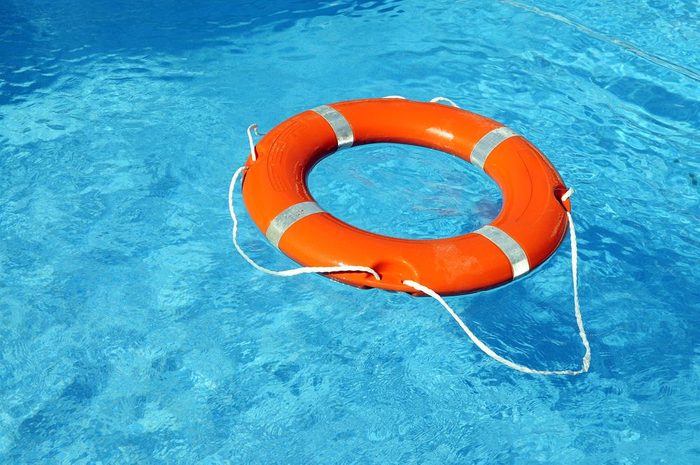
Drowning Doesn’t Look Like You Expect
Drowning is the number one cause of injury-related deaths among young children according to the Centers for Disease Control and Preventio (CDC), so it’s important to know how to prevent it.
According to a study from Safe Kids Worldwide and Nationwide’s Make Safe Happen program, nearly half of parents say if a child was drowning nearby, they would hear him or her screaming for help. But that’s not how it usually goes, according to Dr. Marcee White, a pediatrician and medical advisor for Safe Kids Worldwide.
Young kids will show little movement in their arms and legs, and may only have time to take a quick breath before they go under. There’s no time for screaming. “Drowning is quick and quiet,” he says. “This all happens in a matter of minutes.”
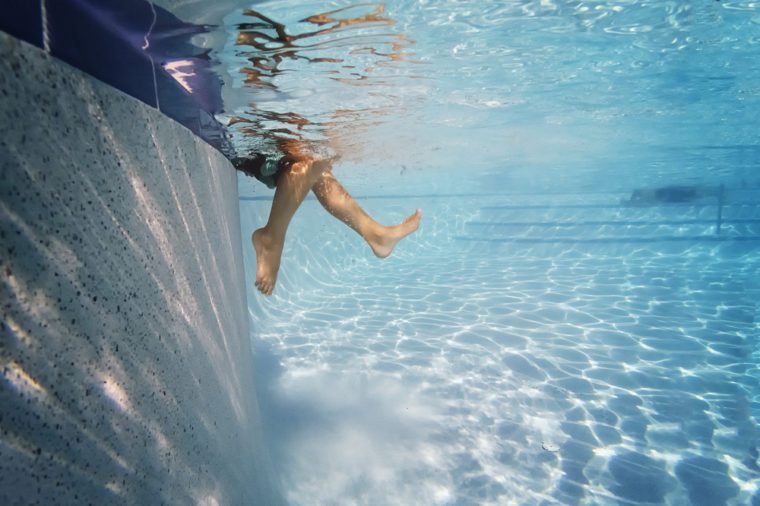
Not Designating a “Water Watcher”
You’re at a summer barbecue. The kids are playing happily in the pool, but each parent thinks someone else is paying attention— which, sadly, means no one is.
“It is very common in pool-party situations for everyone to assume that someone else is watching the pool,” says pool safety expert Eric Lupton, CEO of Life Saver Pool Fence. “Designate a water watcher who is responsible for doing nothing but watching the pool — not using the phone or socializing — and rotate water watchers every 10 to 15 minutes.”
White advises handing the parent on duty a “Water Watcher Card” to make them doubly aware of their responsibility. When it’s time for the next parent to take over, they pass the card along. Here’s a card you can download and print out.
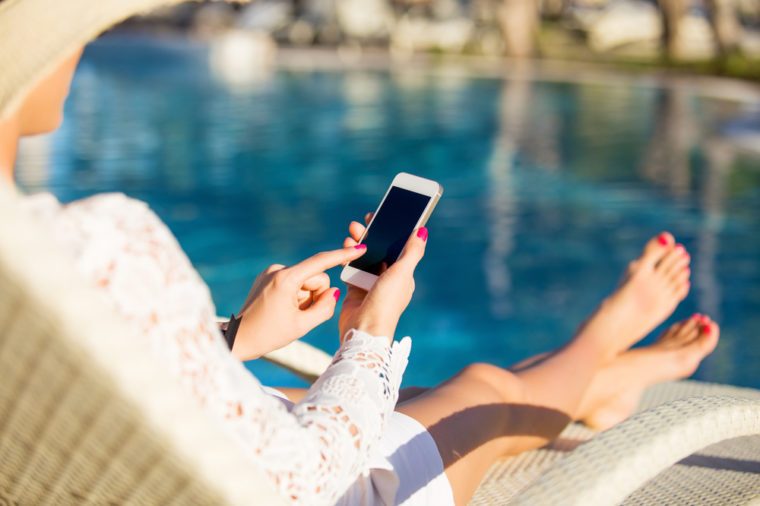
Texting
Home pools don’t usually have lifeguards. But even when you’re at a public pool, be sure you or your child’s caregiver aren’t relying solely on a lifeguard for supervision.
“Before smartphones, there were other distractions at pools and beaches — reading books and magazines, talking to other parents,” White says. “It is all the same — distraction that may put a child at risk.” Be vigilant and create rules for babysitters watching your children at the pool, starting with no cell phone use.
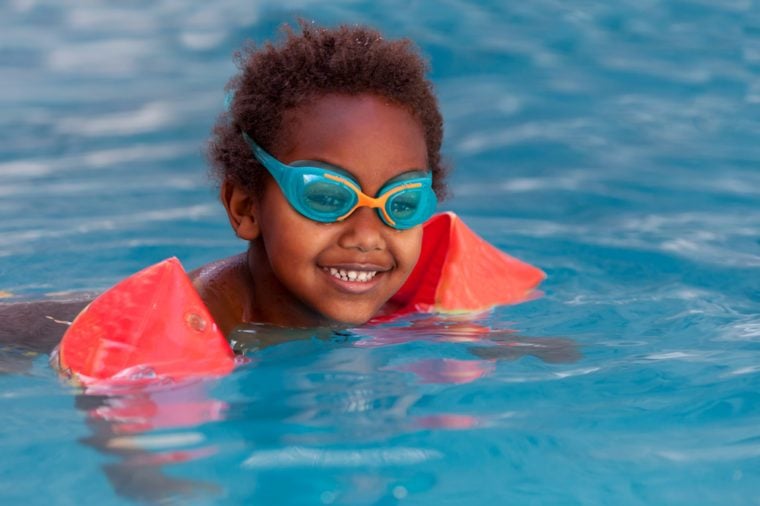
Relying on Floaties
Floaties, “swimmies” and other flotation devices can give parents — and kids — a false sense of security.
“Never assume that your child is safe using flotation toys like inner tubes, rafts, noodles, or other similar items,” says Nychelle Fleming, the Pool Safely Campaign lead for the U.S. Consumer Product Safety Commission. “They are not a replacement for a U.S. Coast Guard approved life vest, which is the safest option for children when they are in and around the water.”
The best ones are officially called “personal flotation devices” or PFDs. “Families should make sure babies and little kids have a PFD with both a collar for head support and a head strap between the legs,” White says. But even with an approved PFD, don’t take your eyes off your child. Plus, swimming lessons are crucial so kids actually learn to swim on their own.
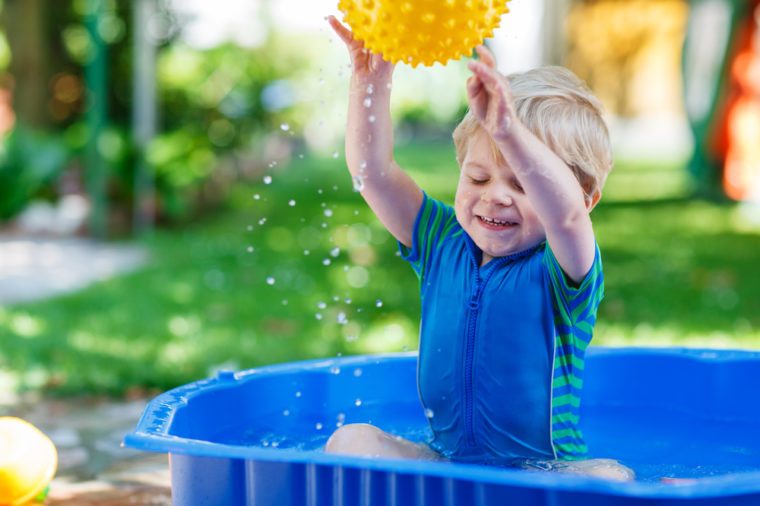
Unmonitored Kiddie Pools
Your little ones will love that little blow-up pool, but just because it’s shallow doesn’t mean it isn’t dangerous.
“The warm, shallow water in these pools [usually untreated tap water] can be the perfect breeding ground for water-borne infection,” White says. “They also pose a drowning danger, even if the water is shallow — a young child can drown in as little as two inches of water.”
She says parents should never leave children in the water unsupervised, and recommends emptying the pool after each use to prevent bacterial growth. Store your kiddie pool upside-down as well so rainwater doesn’t collect in.
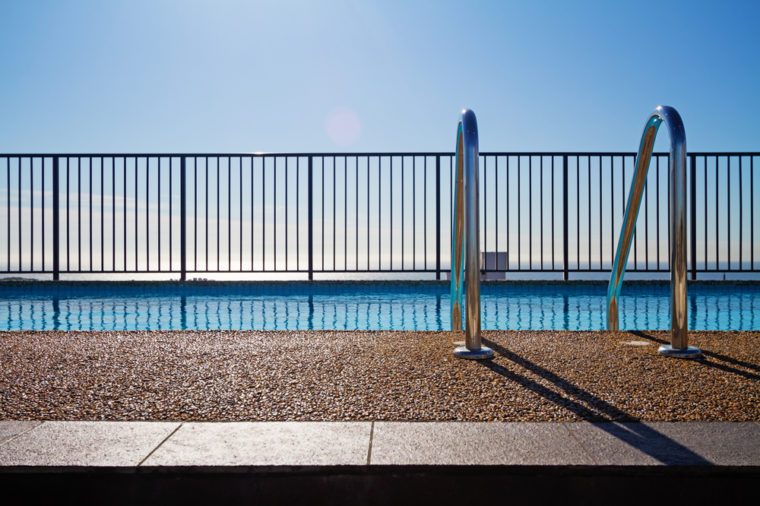
Unfenced Pools
Backyard pools can be a delight, but they need to be fenced off; it’s the law in many areas. If you have young children, consider fencing off the pool, not just the yard. Remember, a fence isn’t foolproof for many kids.
“A pool fence is not a replacement for parent supervision,” Lupton says. “A persistent enough five-year-old, with enough time, can likely overcome any barrier. Definitely keep chairs and furniture away from the pool fence, and keep toys out of the pool area when the pool is not in use so children are not incentivized to try and get in the pool fence.”
He recommends self-closing, self-latching gates instead of manual gates, with an unreachable latch at least 54 inches above the ground. Also, when visiting other homes with pools, make sure your child can’t get outside without your knowledge. And should a child go missing, always check the pool first.
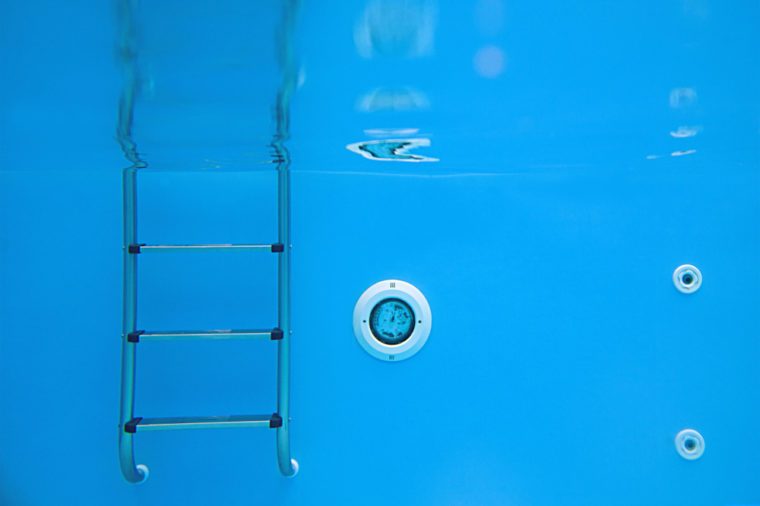
Unmonitored Ladders
You might think an above-ground pool is safe because children can’t easily fall in. But don’t underestimate a child’s curiosity.
“Those with an above-ground or portable pool should put ladders away when adults are not present to prevent children from gaining access,” Fleming says. “If ladders or stairs are not stored properly when the pool is not in use, children may climb or play on them and could easily slip and fall into the pool.”

Drain Covers
The suction of pool drains and filters can be a hazard.
“Children should be taught to avoid pool drains, and it is important for homeowners to know how to shut off their pool pump in the event of an emergency,” Lupton says. “The suction from the drain will be too strong to pull someone off, so the only way to free them is by disabling the drain suction.”
Recent laws surrounding drain manufacturing have helped prevent drain entrapment deaths. But you should still be aware and keep kids away, especially if a drain cover is missing.
“While these are mandated by federal law for public pools, private pools should have them as well,” Fleming says. “In addition to immediately replacing non-compliant covers, pool owners should always replace broken, loose, or missing drain covers, too.”
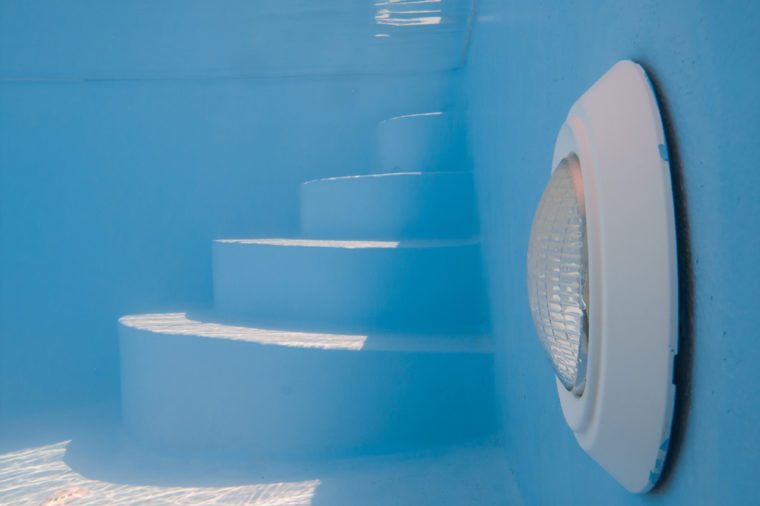
Electrical Shock
You know that electricity and water don’t mix. But what about pool lights, sound systems and other things that require electrical wiring in a pool area?
“Make sure your pool light is regularly maintained,” Lupton says. “Old pool lights have been known to cause electrical accidents for swimmers.”
Electricity runs pumps and heaters, which also need to be maintained properly. Pool equipment should be supplied by ground fault circuit interrupters (GFCIs), Fleming says.
“If using cord-and-plug connected devices such as radios and fans around the pool area, use a portable GFCI or plug them into a GFCI-protected circuit,” she says. “Keep all devices far away enough from the pool’s edge so that they are not accessible from the water.”

Chlorine Effects
Chlorine is supposed to keep the pool clean, but chlorine alone is not enough to keep you safe. And when it combines with dirt, sweat or pee, it can actually be a hazard.
“Urine and dirt mix with chlorine, which uses up the chlorine so there is less available to kill harmful germs,” says Michele Hlavsa, chief of the CDC’s Healthy Swimming Program. “Urine and dirt mixed with chlorine produces chloramines, which can irritate the eyes, giving swimmers red eye.”
It’s not the chlorine itself that makes your eyes red — it’s these disinfection byproducts (DBPs). “Chloramines, an example of disinfection by-products, not only irritate the eyes, they can also irritate the respiratory tract and trigger asthma attacks,” Hlavsa says.
Shower before entering the water to rinse off grime; as little as one minute is sufficient. And for goodness sake, don’t pee in the pool!
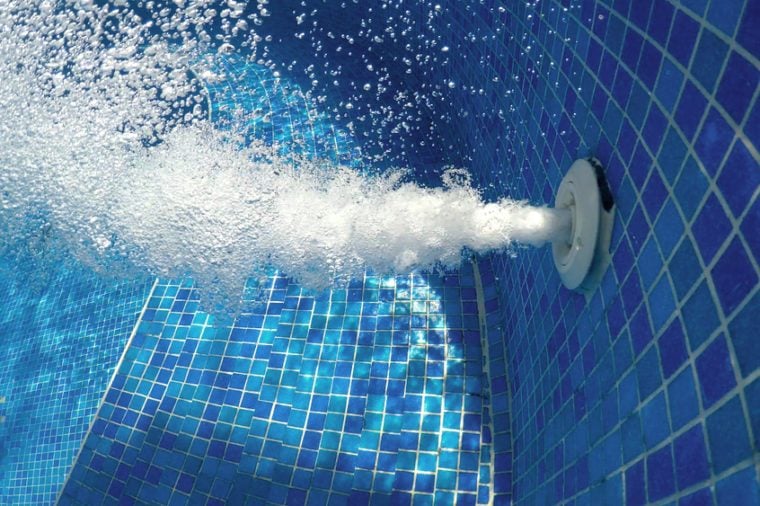
Respiratory Illnesses
One of the most common recreational water illnesses (RWIs) is the bacterial infection Legionnaires’ disease.
“People can get sick when they breathe in aerosolized water droplets or mists, like those made by hot tub jets, that contain Legionella [bacteria],” Hlavsa says. “Legionella can cause Legionnaires’ disease, a severe type of pneumonia, and Pontiac fever, a mild flu-like illness without pneumonia.”
To avoid these, check inspection scores of your local public and hotel pools. It’s a smart idea to carry test strips with you, and make sure the pool or hot tub you’re about to get into has the correct disinfectant and pH levels.
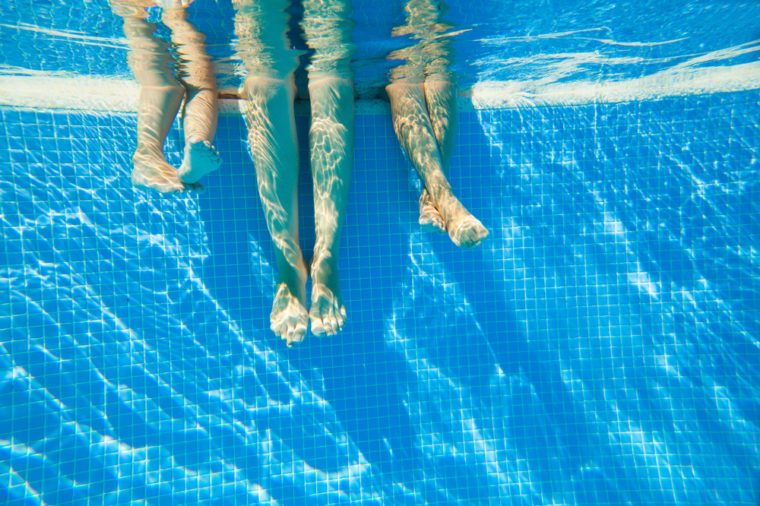
Athlete’s Foot
Athletes aren’t the only ones who get this fungal infection from locker rooms — recreational swimmers can, too.
“Athlete’s foot is an infection of the skin and feet caused by fungi that might be in damp areas such as showers, locker rooms, and swimming pools,” Hlavsa says. “To prevent athlete’s foot, clip nails short and keep them clean because nails can house and spread the infection. Also, avoid walking barefoot in locker rooms or public showers.”
Keep those flip-flops or sandals on!

Swimmer’s Ear
You know that annoying “water in your ear” sensation you sometimes get after swimming? Make sure you dry your ears thoroughly after leaving the water.
Why is this important?
“Pseudomonas is a bacteria that can cause a skin infection, commonly called ‘hot tub rash,’ and an outer ear infection, commonly called ‘swimmer’s ear,’ ” Hlavsa says. “If a swimming venue does not maintain proper cleaning practices and disinfectant levels, these bacteria can grow on wet surfaces of pools, hot tubs, or water playgrounds and form biofilms — a slimy film made up of bacteria and their excretions.”
That’s something you really don’t want lingering in your ears. Again, check posted inspection scores or do your own inspection with test strips.